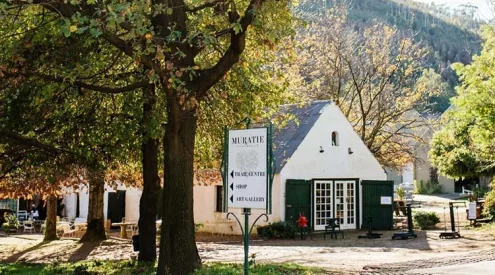Winter may seem barren above ground, but there’s a wonderland of hardy roots and spices snug below a blanket of soil. From turmeric and ginger to potatoes and the sweetest onions, Louzel Lombard Steyn celebrates the beauty of the food world’s ugly ducklings.
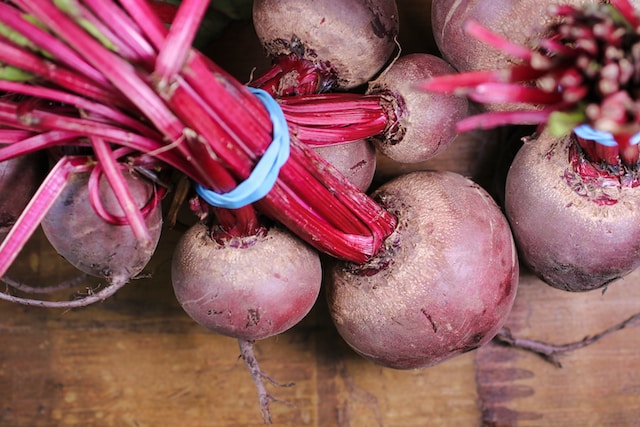
My Ouma Delene isn’t your run-of-the-mill granny clad in a cardigan and with an aroma of talcum powder following her around. Sure, she bakes and cooks and gives warm hugs, but she’s a farmer first and foremost and the fragrance that reminds me of her, is that of the earth. If you visited in summer, you’d find Ouma climbing the peach tree and Oupa on the ground, running around with the laundry basket trying to catch what Ouma threw down. Even the fruits half-eaten by the sparrows and sunbirds were picked – and made into chutney and jam.
In winter, Ouma’s hustle did not slow down. When we were growing up, she had a lucrative business growing and selling truckloads of onions from their retirement plot outside town. Oupa would shake his head. ‘We were meant to scale down,’ he’d moan, discreetly bragging about the booming business to friends. Ouma was persistent. She would walk her fields daily, fishing for weeds and probing the protruding bulbs to inspect their readiness for the market. She always carried a bundle of fresh onions by their green locks back from the fields, and usually ate one en route. I’m not joking – she’d eat an onion raw. She swore it was sweet and juicy; not the pungent taste typically associated with raw onions.
Years later, I’d learn that the taste of vegetables – especially root vegetables – is a direct indication of soil health and that happy soils produce sweeter veggies. It’s been measured and proven; the sugars, measured using a Brix scale, in the juices of foods grown in healthy soil are significantly higher compared to those produced in over-farmed commercial land. The recent documentary, Kiss the Ground, advocates this, pointing out that soil health is the key to combating climate change, preserving Earth and saving humanity to boot.
This obsession with soil is not new. In the wine industry, what goes on beneath Earth’s surface is of paramount importance in producing wine’s nuanced flavours and character profiles. Soil is a big talking point and there’s no reason why we shouldn’t add the same significance to those soils producing food. A beetroot grown in loamy soil, for example, has a totally different flavour profile from one cultivated in clay soil, which is known to produce tough and stringy beetroot with an intense woody taste.
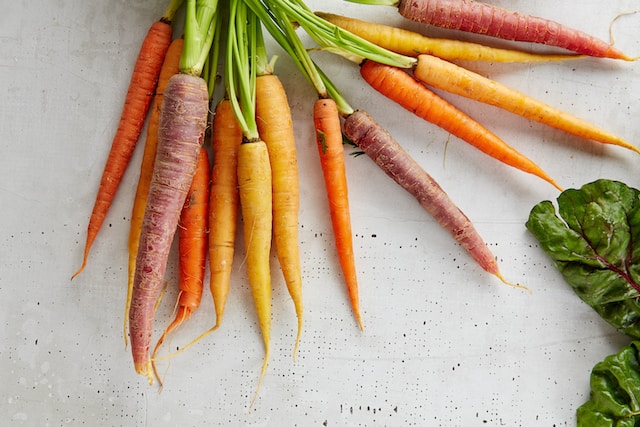
Even in the most dormant season, the earth rewards us with the sweetest picks. While cold nights and autumn frost will kill most terranean fruit and plants, root crops – tucked beneath their warm soil blanket – produce sweeter yields as a result of “winter sweetening”. Over the course of the growing season, root vegetables store energy in the form of starch. As temperatures drop, they convert these starches into sugars, which act as an anti-freezing agent for their cells. Harvest at the right time and you’re guaranteed Ouma’s sugary onions, sweetened by the cold Karoo nights.
Another diamond of the dust can be found in the Northern Cape, South Africa’s most arid province. The Kalaharituber (Terfezia pfeilii), or !Naba, is a truffle-like spud that is dug up from the red Kalahari soil from March through winter. For centuries, these rarities have been collected for food during the colder season by the hunter-gatherers of the Kalahari Desert. They’re nutrient-dense with a taste similar to that of raw corn or asparagus, with a slight mushroomy fragrance. They’re especially tasty when fried in butter.
Most root veggies, you’ll find, take well to a little love in the form of butter. They’re known to keep their integrity in cooking and permeate a sweet and earthy flavour that grounds a dish, so to speak.
Ouma’s sweet Karoo onions are the dearest case in point, even though she no longer grows them. These days, her vast fields have been downsized to a few old tyres in the backyard of my grandparents’ small mid-town home, carrying one potato plant and a few beetroots. Rest assured, though, that come Christmas there’ll be beetroot pickle on our plates.
No tears here
Onions are the supporting act of so many dishes the world over and rarely get a chance to shine on their own. If you don’t have the guts to bite into a raw whole onion like my Ouma, that’s okay. Rather opt for the deep-fried version at Jbay Bru Co in Jeffreys Bay. You take one prized and peeled bulb, cut it into a blooming shape with an apple corer, then dust in a special batter and deep-fry until sweet and crispy. The final product can be eaten in the “He loves me, he loves me not…” style – by picking the golden “petals” from the core one by one.
Where: Jbay Bru Co, 10 Da Gama Road, Jeffreys Bay, Eastern Cape
042 940 0165, jbaybruco.co.za
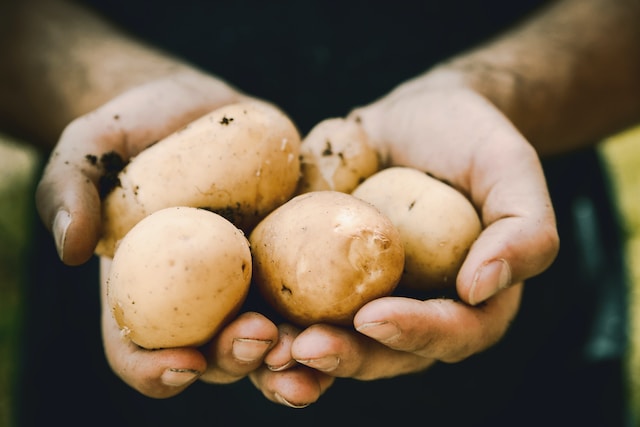
Tators for the win
You’d be hard-pressed to find an eatery in the country that doesn’t have potatoes on the menu in some shape or form. From vodka to tasty chips, they can be anything. Thankfully, there are places dedicated to celebrating their versatile flavours and textures not just as a side dish to steak or chops. Midrand’s Potato Shed is a mix between a bootlegger brewery and South American-style smokehouse, where you can feast on dishes prepared with pit smokers, fire pits, robata grills and wood-fired ovens. Try a humble baked spud with mushroom ragu or moreish wood-oven roasted potatoes and thank the earth.
Where: The Potato Shed, Polofields Drive, Waterfall, Midrand, Gauteng
010 541 1911, thepotatoshed.com
Root stock
Did you know turmeric flowers are edible? Or that you can brew a healing tea from the roots if harvested in winter? Escape the dreary winter and join master gardener Gundula Deutschländer from Babylonstoren for an earthy masterclass in root spices; her turmeric workshop is called “Harness the golden glow of earthy root spices”. Be prepared to get your hands dirty for this one, as you’ll be digging for turmeric and ginger gold. Spices like these are best harvested in winter when the plants are dormant and their superpowers preserved in the roots. Turmeric, with its sunny flavour and bright colouring properties, is a highlight of the day. The class explores the various ways to harness its warm glow throughout the year – either fresh or dried, as a shot or in tea, fried or baked, and even used in paint or dye.
For another subterranean experience, check out the new Babylonstoren museum, The Story of Wine. It starts with visitors walking through a massive root sculpture installation, representative of the farm terroir.
Where: Babylonstoren, Klapmuts, Western Cape
021 863 3852, babylonstoren.com
Pungent fest
In the first week of November every year, the people of the Karoo heartland grant a free pass to garlic lovers and ignore the stench permeating the landscape. Yes, your entire body will reek of glorious garlic and that’s the point of Nieu Bethesda’s annual garlic festival. Foodies descend on the small Karoo town to enjoy Mother Earth’s most pungent produce and savour the likes of garlic rum, garlic ice cream, garlic wors, garlic sushi… The requirement is to bring a cooked garlicky casserole-size dish to share at the community table.
Where: Boetie’s Pub, New Street, Nieu Bethesda, Eastern Cape
078 206 2925 (Boetie’s Pub)
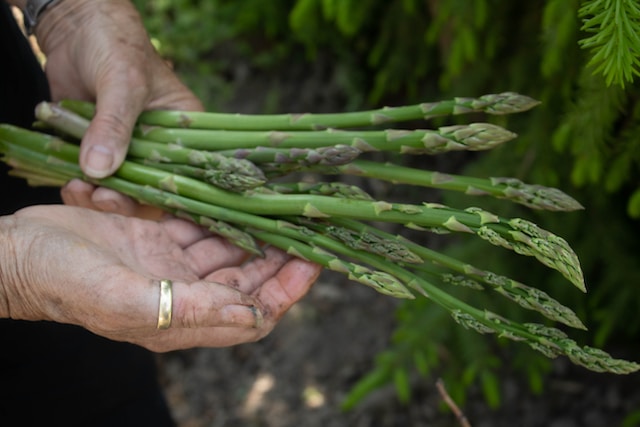
Green gold
Piercing from the bare earth like otherworldy edible blades, asparagus plants are truly unlike any other veggie. They were once classified in the lily family, similar to the other allium species such as onions and garlic. However, genetic research now regards asparagus in a complete class of its own – the Asparagales family. Asparagus season kicks off in October and the bulk of South Africa’s shoots are produced in the eastern Free State. In season, you can find locally grown green asparagus every weekend at Clarens Country Market.
Where: The market (where a few vendors sell asparagus) happens on the lawn in front of the bookshop Bibliophile, 312 Church Street, Clarens, Free State
083 765 8901
Grow your own
Still, the best way to harvest the flavours of the earth is to grow your own veggies in an environmentally friendly way. The result of a community collaboration involving the people of Mpophomeni township, outside Howick, the cookbook Mnandi – a taste of Mpophomeni is an incredible resource and a great guide to help you grow and prepare food that is good for you and good for the planet, too. mpophomeniconservationgroup.wordpress.com/mnandi
Can’t beet it
Rootstock Vegi Crisps have become a household name with their tasty chip alternatives. The business works on a symbiotic community principle; they provide community farms with sweet potato shoots and the knowledge needed for a bountiful harvest. The rest is up to the local producer. Come harvest time, Rootstock buys the fruit back at market-related prices to create its iconic crisps. An unexpected – but very positive – the upshot of this business model is that farmers are able to cultivate veggie gardens that feed their families, too. Other root vegetables – including beets, carrots and potatoes – are bought from respected and responsible commercial producers and then the crisps are all handmade in small batches.
By Louzel Lombard Steyn
Pictures: Unsplash
A version of this article appeared in the May 2022 print issue of Getaway
Follow us on social media for more travel news, inspiration, and guides. You can also tag us to be featured.
TikTok | Instagram | Facebook | Twitter
ALSO READ: Where to buy sustainable fish in South Africa









